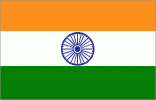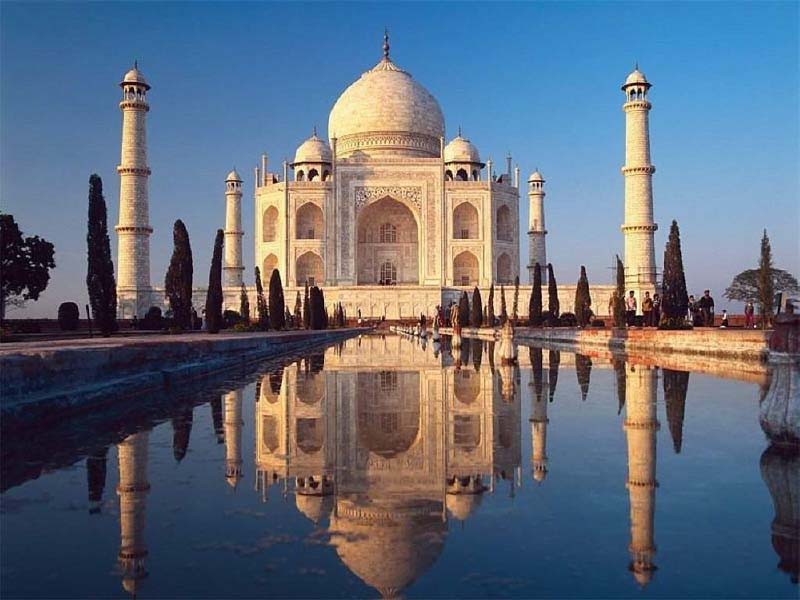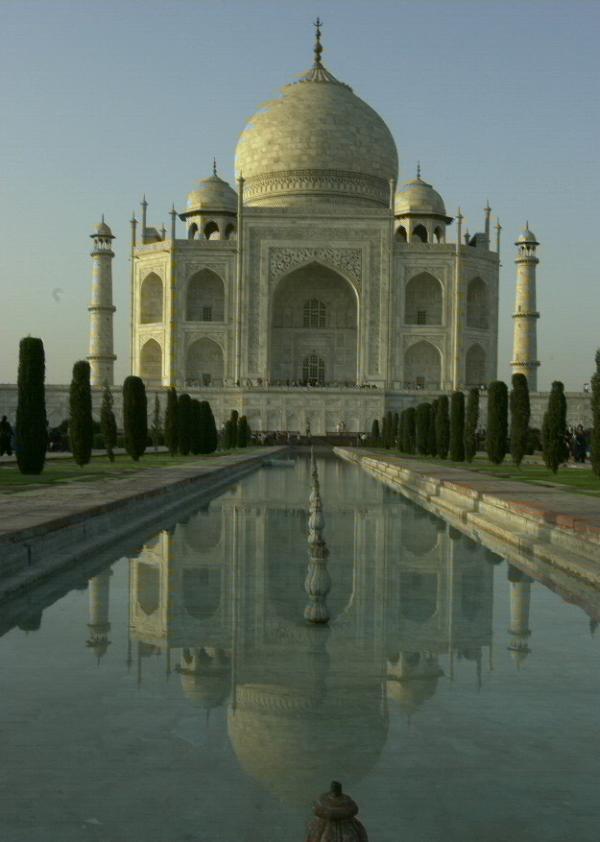 |
 |
TAJ MAHAL - INDIA
 |
 |
| Location: | Geographic coordinates: | Area: | Area - comparative: |
| Southern Asia, bordering the Arabian Sea and the Bay of Bengal, between Burma and Pakistan | 20 00 N, 77 00 E | total: 3,287,590 sq km | slightly more than one-third the size of the US |
| Population: | Languages: | Capital: | Currency: |
| 1,029,991,145 (July 2001 est.) | English enjoys associate status but is the most important language for national, political, and commercial communication, Hindi the national language and primary tongue of 30% of the people, Bengali, Telugu, Marathi, Tamil, Urdu, Gujarati, Malayalam, Kannada, Oriya, Punjabi, Assamese, Kashmiri, Sindhi, Sanskrit, Hindustani (a popular variant of Hindi/Urdu spoken widely throughout northern India | New Delhi | Indian rupee (INR) |


| Types of rocks used on the monument: |
White Marble (metamorphic rock). Grey, Red and Yellow Sandstone (sedimentary rocks). Semiprecious stones such as agate, turquoise, lapis-azuli, coral, onyx, cat's eye, jade and blood stone. Minerals such as magnetite. |
Three types of stones have been used in the Taj Mahal :
(1) Semi-precious stones as Aqiq (agate), Yemeni, Firoza (turquoise), Lajwad (Lapis- lazuli); moonga (coral), Sulaimani (onyx), Lahsunia (catís eye), Yasheb (jade) and Pitunia (blood stone) which were used for inlaying.
(2) Rare and uncommon stones as Tilai (goldstone), Zahar-mohra, Ajuba, Abri, Khathu, Nakhod and Maknatis (magnet stone) which were used in bold inlay and mosaic chiefly on floors, exterior dados and turrets and
(3) Common stones: sang-i-Gwaliari (grey and yellow sandstone) sang-i-Surkh (red sandstone), sang-i-moosa (black slate) and sang-i-Rukhan (sang-i-marmar; white marble) which were used in foundations, masonary and for finishing the external surfaces.
© Guillermo Rocha, P. G. / Brooklyn College Geology Department